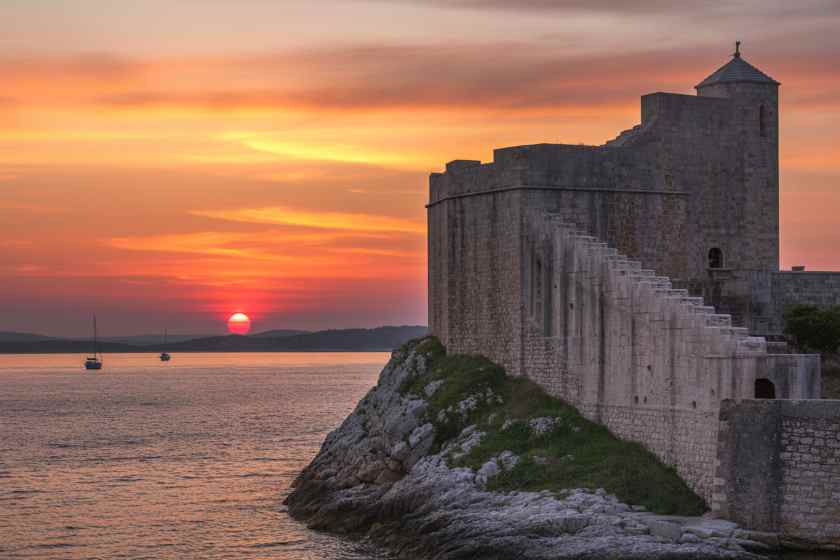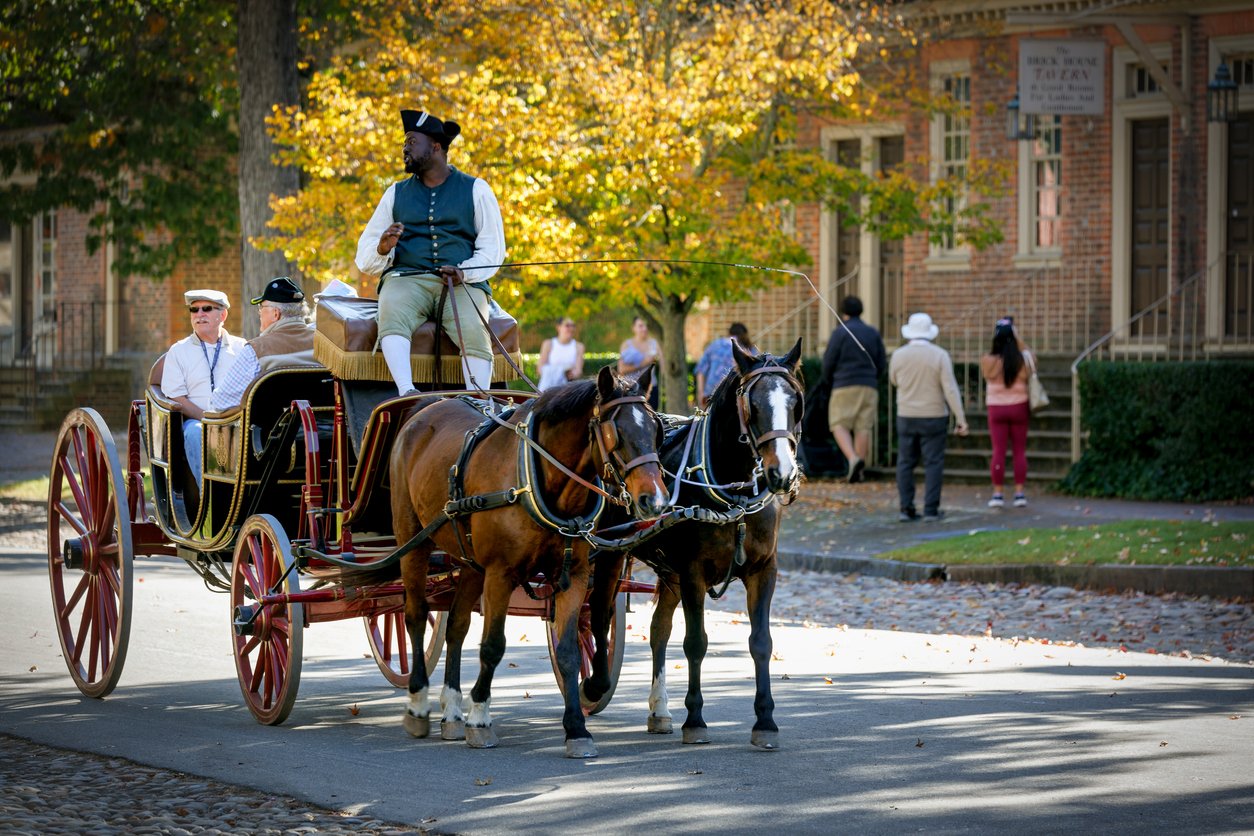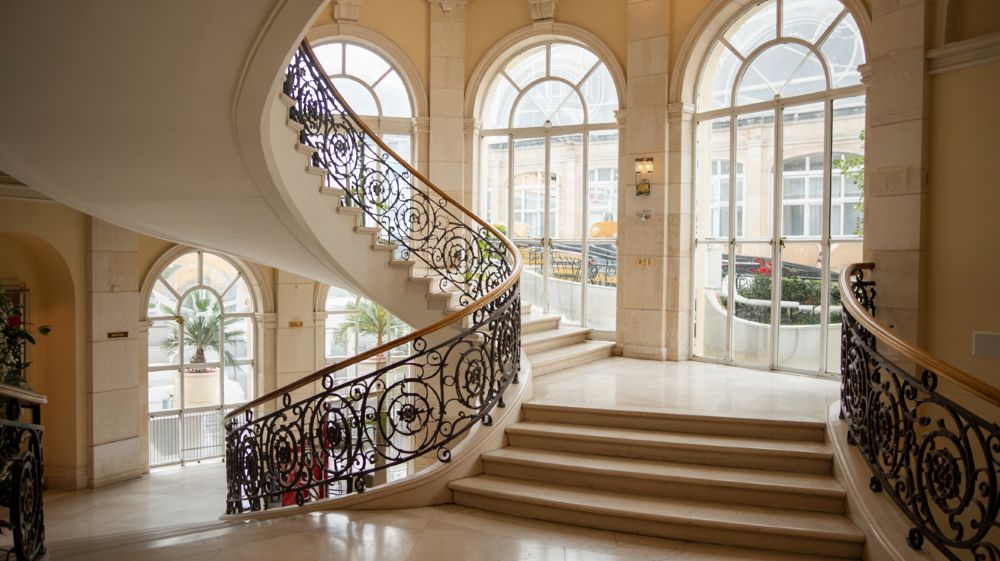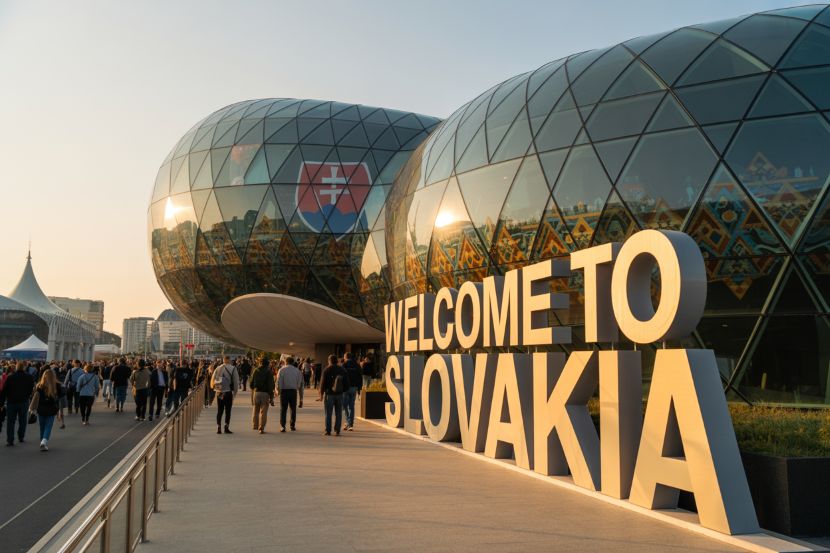
Published on
September 23, 2025

Located in the rugged uplands of Dalmatia, Knin Fortress commands a position that confirms its standing as the most formidable military edifice in Croatia. Visitors crossing its ramparts are transported to a singular moment where centuries of stone stay alive in sweeping, panoramic views of the Knin valley. What was once the seat of royal power has evolved into an expansive open-air museum, quietly curating the sweep of Croatia’s heritage. Emerging from the austere interior of the region, the site offers an unscripted alternative to the postcard beaches of the Dalmatian coast, instead revealing the inland heart of a region defined as much by its inland landscapes as by its famed seafront.
Knin Fortress stands sentinel over the Dalmatian hinterland, its birthplace now buried within the layered sands of the 1st-century Roman empire. The banks of the Krka River guard the site from easy access, and the ramparts, once the final word in royal security, now preserve an Ottoman- and Habsburg-accented palimpsest of architectural styles. Where once banners announced its occupants, an unobtrusive museum now presents the fort’s multilayered story. Travellers undeterred by the absence of golden sand may enrich their knowledge of Croatian military and cultural history in an unexpectedly intimate setting, skirted by dense forests of pine and olive.
Knin Fortress: A Historical Overview
Emerging as a vital military bastion in the Roman epoch, Knin Fortress has continuously shaped the broader narrative of Croatian history. Successive centuries saw the site judiciously fortified and enlarged, with the medieval era witnessing its integration into the very ambitions of the Kingdom of Croatia. A poignant transformation occurred in the sixteenth century, when decisive expansion fortified its geographical and psychological deterrent value, rendering the fortress a linchpin for ongoing military enterprises.
Beyond its martial function, the edifice is an enduring testament to Croatian statehood, having acted as an official residence for the Croatian monarchs and a veritable totem of national consciousness. Its enceinte absorbed the resonance of perennial sieges, royal ceremonials, and the gradual economic accretion of the hinterland.
Presently, the fort is avowedly the custodian of the country’s plural past. Methodical restorative measures now render it legible history, its ancient ramparts, bastions, and verges guiding the public through temporally sequenced experience. The site has been judiciously reframed as a museum, where curated artefacts, multidisciplinary panels, and interactive components conjoin scholarship and public engagement, anchoring individual exploration in a broader frame of enduring historical consequence.
Knin Fortress entices visitors by offering an itinerary beyond its admirable masonry and its soaring vantage points. Within its expansive walls, multiple sites and activities reveal both its storied past and the surrounding countryside’s unspoiled allure.
Among the fortress’s most compelling features, its 360-degree vista of the Dalmatian hinterland commands attention. Positioned at the citadel’s highest facing, guests overlook the domestic vista: the sweep of the Krka River, the tidy roofs of Knin itself and the serrated outline of surrounding hills. The uninterrupted, jewel-cold panorama signifies the quieter, more genuine facets of Dalmatia, an enchantment often overlooked by more trodden routes.
Moving inward, the contemporary museum translates this landscape’s legacy. Housing an evocative assemblage—medieval ornaments, arms, and meticulously transcribed texts—it invites a layered appreciation of Knin’s part in the larger Croatian narrative. Wandering among the citadel’s courtyards, watchtowers, and surviving curtain walls, visitors experience a layered appreciation of Knin’s part in the larger Croatian narrative. Wandering among the citadel’s courtyards, watchtowers and surviving curtain walls, guests traverse a preserved past, inhaling the material fabric of history while the massif landscape provides an eternally watchful backdrop.
Those who seek outdoor adventure will find Knin Fortress bordered by breathtaking landscape trails that showcase the undulating beauty of the Dalmatian highlands. The region invites casual strolling as well as purposeful hiking. Photographers especially appreciate the vantage points at the citadel itself, where the ancient stone towers complement rolling hills and sky.
Beyond its scenic vistas, Knin Fortress ranks as a site of inscrutable national and cultural importance. Inside its rugged walls, organised events and festivals update the ongoing story of Croatian heritage. Performative traditions, from medieval reenactments to Serrated lute hours, mingle with artisan demonstrations and culinary tastings; visitors plunge into living customs that were, only a generation ago, contemporary vernacular.
More than brick and mortar, the fortress embodies an ancient collective self-portrait: Croatian identity forged by centuries of struggle and renewal. This monument crystallises the stubborn continuity of a people. Situated along a historically vital thoroughfare, the edifice illuminates national memory as decisively as it illuminates the Dalmatian valley at dusk. Its persistent stone totalling against the horizon resonates with contemporary grievances and victories, ensuring its continuing deeds and citadel remain as integral to the Croatian cultural horizon as its meandering salt coast.
Essential Information for Visitor Accessibility
Knin Fortress lies within a short travel distance from downtown Knin, accessible by car or by regular bus services from key Croatian cities, notably Split and Zadar. The site rests atop a prominent hill; consequently, a steep, well-maintained path leads from the nearest parking to the fortress gate. The ascent, although demanding, rewards visitors with panoramic vistas across the region and with intimate encounters with the fortress’s storied past.
The site remains open throughout the year, with the summer months designating the busiest season. Guests may wander the fortress at leisure, although those preferring structured insight may reserve a guided tour. Visitor centres and signposts throughout the site are multilingual, featuring concise, legible panels and artefacts presented in both Croatian and English, thereby accommodating a diverse international audience.
Knin Fortress and the Dalmatian Hinterland
Dominating the Dalmatian hinterland, Knin Fortress exemplifies the region’s lesser-known yet immeasurably rewarding landscape, which transcends the much-celebrated seaboard. While the Adriatic’s coves and isles draw the lion’s share of visitors, the inland valleys and plateaus brim with layered history, spectacular natural features, and classified traditions of Croatian life. Faro out of the hinterland, Knin Fortress encapsulates the silent witness, quietly opening up wider horizons for curious travellers heading inland.
Beyond the walls of Knin, the landscape unfolds further. Krka National Park enchants with its cascading waterfalls and emerald karst lakes, while the historic town of Skradin, itself a picturesque portal for national park cruises, offers a quieter brew of Dalmatian hospitality. Elevated trails reveal panoramic ridges; the whispering ruins of medieval stone churches figure on every hillside; wine- and olive-dripping coves of congregation and commerce pepper the region. The Dalmatian hinterland thus celebrates the unhurried, unsung pulse of Croatia; an invitation to connect with landscape and place, embellished by stories yet unadmitted to guidebooks.
Conclusion
Knin Fortress represents an indispensable waypoint for visitors who seek to engage with Croatia’s narrative well beyond the internationally acclaimed Adriatic coast. Commanding a panorama that fuses mountainous hinterlands with the verdant plains of the Krka region, the citadel distils centuries of turbulent yet transformative history into a single vantage point. Its monumental architecture and expertly conserved bastions embody social, military, and artistic achievements that have shaped Dalmatian identity, rendering the site an abiding symbol of communal fortitude and picturesque continuity. Consequently, it is a compulsory itinerary item for the historian, the adventurer, and any traveller in pursuit of an authentic encounter with the region’s deeper and more resonant heritage.
link








